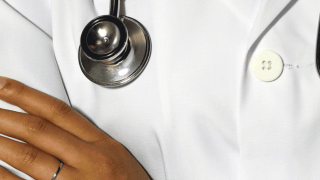The year 2020 and its aftermath shook the world. But City of Hope faced the difficulties of the coronavirus outbreak while staying focused on its mission — and even building momentum — thanks to exceptional efforts and innovative thinking from every corner of its community. On this National Doctors Day, we pause to recognize those efforts.
Caring experts gave their all, day after day, to ensure patients received safe, top-quality cancer care. Researchers acted with urgency and agility to fight a new disease that posed special danger to that patient population.
“There are hundreds of examples of people going above and beyond,” said Vijay Trisal , M.D., City of Hope’s chief medical officer and Dr. Norman & Melinda Payson Professor in Medicine.
Indeed, everyday heroes abound across the City of Hope community. What follows is a curated collection featuring the few who stand in for the many: thousands of people so dedicated to transforming the future of health that no pandemic could stop them.
Contending with a new enemy, speed matters
Numerous researchers pivoted to address the coronavirus, inspired by both society’s pressing need and the serious hazard COVID-19 represents for cancer and diabetes patients. Confronting the pandemic with City of Hope’s ability to accelerate breakthroughs from lab bench to patient’s bedside, they cultivated approaches from immunotherapy to DNA vaccine to gene therapy.
One clinical trial led by Sanjeet Dadwal, M.D., chief of City of Hope’s Division of Infectious Diseases, began accruing participants in August to test the safety of leflunomide, an inexpensive anti-inflammatory for arthritis, as a treatment for cancer patients with COVID-19. In another endeavor, viral immunologist Don Diamond, Ph.D., professor of hematology & hematopoietic cell transplantation, began development of a coronavirus vaccine in March. By November, an early safety trial had opened.
While Diamond built upon his work developing a vaccine against cytomegalovirus, which is potentially deadly to patients recovering from blood stem cell transplantation, redirecting a lab’s efforts is more complicated and difficult than one might even assume.
“It’s just phenomenal what Don’s lab has been able to do,” Trisal said. “To take a vaccine from hypothesis to Phase 1 trial in a matter of months is just unheard of. It’s not something that people can do in a traditional academic institution.”
Care, and caring, during a health crisis
City of Hope’s multidisciplinary team of medical professionals strived to make sure treatment continued despite the pandemic, resulting in no delays in surgery or appointments and minimal impact on care through ongoing clinical trials. That required nimble implementation of telehealth, with the new Hope Virtual platform, and stringent measures to avoid transmission on campus and in clinics. Not to mention a lot of hard work.
When newly established coronavirus screening stations required staff, nurses and medical assistants from a number of units volunteered for months-long stints at testing locations. That willingness to step outside one’s comfort zone for the greater good was widespread.
“The heroism was not just those who worked 18 hours a day — which so many people did,” Trisal said. “It was also important that our colleagues put themselves in a place of discomfort and uncertainty, stepping up to do something they weren’t trained to do. And they performed exceptionally well.”
Many physicians pivoted to treat cancer patients now suffering with COVID-19 — including blood cancer patients, those most vulnerable to the virus's effects — all of whom were treated in specialized, isolated treatment facilities. Despite safety protocols, doctors vigilantly oversaw their patients' care. And because of those strict protocols, there was not one case of patient-to-patient, or staff-to-patient, or patient-to-staff transmission of the coronavirus.
There was an unhappy tradeoff associated with one safety measure. As a rule, there were no visitors for patients.
“One of the most difficult parts in all of this is saying no to people at the front door, or in the waiting room of the clinic,” said Anne Ireland, M.S.N., R.N., clinical director of the Solid Tumor Program and executive director for community and outreach. “It’s heartbreaking. In response, nurses have stepped up to take a more active role.”
Knowing the isolation felt by those without family close at hand, the medical team did all they could. In one case, that meant throwing a socially distanced birthday party for an inpatient. Because details matter, the celebration came complete with the patient’s favorite, exotic cake. Some attendees were there on their day off.
“I’m not sure anybody can fill the gap for patients who can’t see their families,” Trisal said. “But if there’s anybody who could, it’s the City of Hope nurses.”
